What the Rail Systems are, a visual guide to common systems
Written by Chris, updated Aug 31 2019 in accordance with our editorial policy.
I do a lot of work with rail systems. Much of this is about how the rail systems interact with other parts of the train line. This work means helping people understand what rail systems are and how they work. Here, I’ve tried to do the same, to help anyone understand rail systems.
Rail systems is the term used for all the systems that support the operation of a train service. This is a distinct term given to the parts of the train line that are not the civil structures which trains lines are built on. Rail systems include:
- Rolling stock, the trains themselves;
- Permanent way, the tracks the trains run on;
- Signalling, the system that directs the trains while stopping them from colliding; and
- Other systems that can be built to support the running of trains.
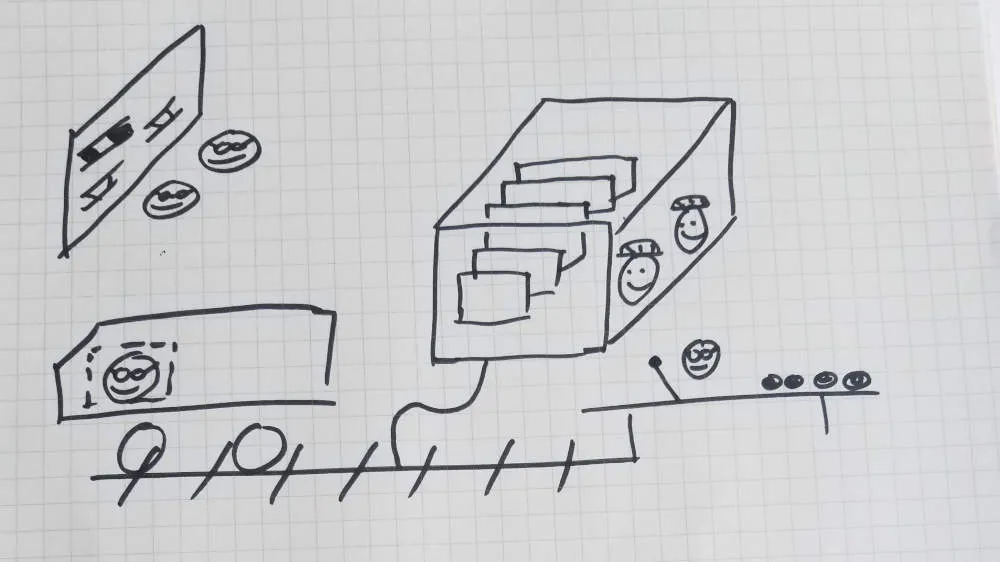 Rail systems help people operate a train line
Rail systems help people operate a train line
Breaking a complicated network, such as a rail line, into its component systems helps people organise the work that needs to done on the systems. Work such as designing, building, or maintaining these systems.
I put together a brief explanation of how rail systems were described to me as I started working in rail:
The 3 Necessary Rail Systems
Without these systems, there would be no train line.
1. Rolling Stock
What is a train line without trains?
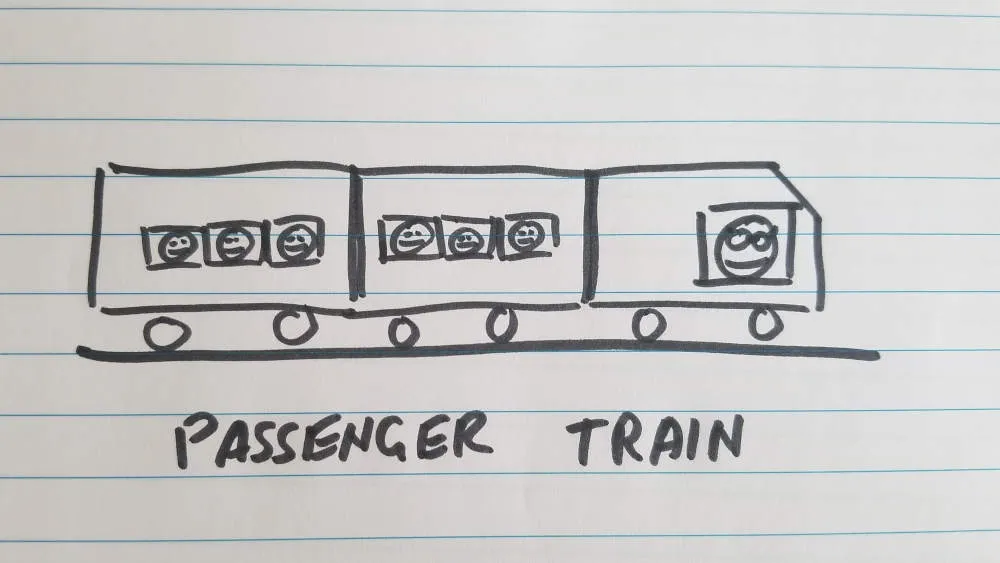 Passenger trains are a type of rolling stock
Passenger trains are a type of rolling stock
Rolling stock is the term we use for trains. This can include freight trains, passenger trains, and the trains used to construct and maintain the line.
Rolling stock is generally the term I use for the locomotives, carriages, and maintenance vehicles while consist is the term I like to use to refer to a ‘train’ made of locomotives and carriages.
Part of the rolling stock work together to keep it moving on the tracks and serving its purpose of transporting freight or passengers. These rolling stock parts can include bogies, air conditioners, doors, seats, and even the body of the train itself.
On projects I’ve worked on, the bodies of the trains are cast in factories in an Asian country, then the assembly of all the different parts of the train is done in a factory closer to the line.
All of these train lines I’ve worked on have dedicated depots for the maintenance of rolling stock, including regular fault finding and preventative cleaning, all the way up to complete part replacement.
Consist and bogie are described in greater detail here: https://econstructioncareers.com/news-insight/eleven-rail-terms
2. Permanent Way
Track.
Permanent way is the track, the way it navigates curves and gradients, and the rocks and dirt that the track sits on.
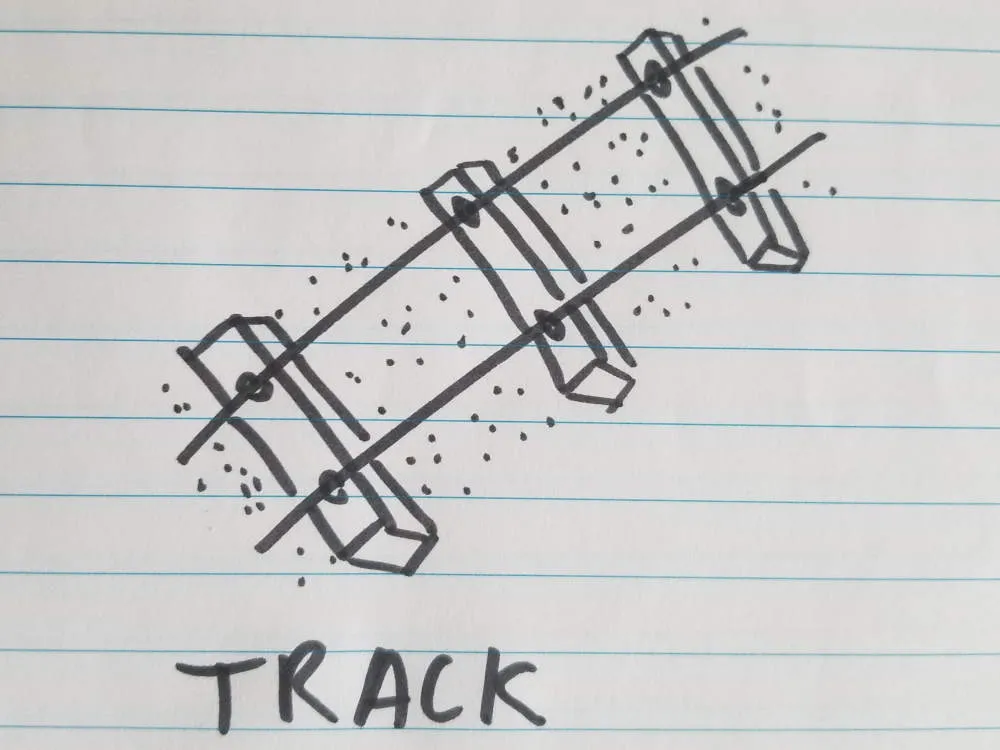 Permanent way includes the track trains run on
Permanent way includes the track trains run on
Without permanent way you don’t have a rail system, you don’t even have transport (permanent way is similar to roads).
Permanent way doesn’t have as many parts as rolling stock or a signalling system, but it is still a complex system of interactions. Tracks need to be free of chips and cracks, and shaped the right way. The ballast under the tracks needs to be consistent. Drainage for water that falls on the tracks needs to run the right way and not pool.
If the permanent way is not maintained, trains can derail. In a recent analysis I did track was the top reason trains derailed. To find out the other reasons, check it out here: https://econstructioncareers.com/news-insight/why-trains-derail
3. Rail Signalling
Signalling is the system that tells the trains where to go while preventing them from crashing into each other.
 Rail signalling helps people control trains while preventing the trains crashing
Rail signalling helps people control trains while preventing the trains crashing
Rail signalling can be simple processes such as writing permission slips on paper allowing a train to travel to the next station, or it can be a complicated system of sensors, wireless communications, and vital computer equipment.
If you have more than one train on your train line, I recommend at least some form of signalling.
What is signalling and how does it work, click here to check that out: https://econstructioncareers.com/news-insight/rail-signalling
Four Additional Rail Systems
Depending on what sort of train line you are building, how many passengers or how much freight it will serve, these are additional rail systems that might be worth including.
1. Power Supply and Overhead Wiring
Trains I’ve seen are powered by diesel or electricity. The electricity can come from wires above the train, or from rails below.
I was surprised to learn that overhead wiring is a problem for mechanical engineers to solve. Even though it’s about supplying electricity to trains, the system that holds the wires in place is a mechanical problem.
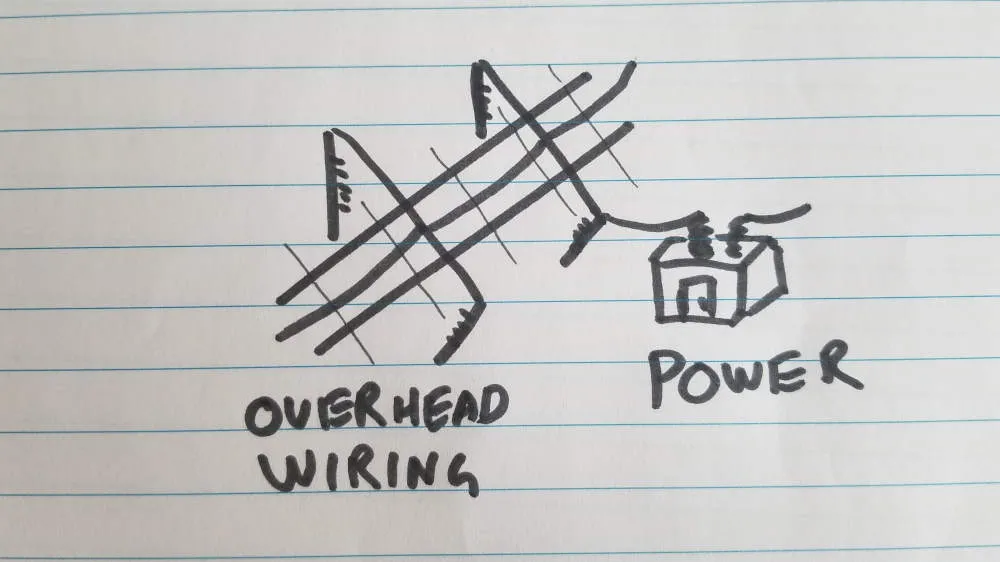 Power supply and overhead wiring provide trains with electricity
Power supply and overhead wiring provide trains with electricity
Power supply for an electric train is the system of transformers and cables that take power from the electricity grid and transform it into power suitable for trains. The power supply system ensures that problems in one part of the train network do not shut down the power to the whole train network.
Overhead wiring is the system of cables and supports that allow a train to keep its circuit complete so that motor can move the train. Contact wires for trains sit in the sun all day, and the cold air all night. They expand and contract with the temperature change and move with the wind. Weights tied to the ends of cables keep the contact wires tight and held in position for trains.
Trains can pull down the overhead wiring when the wire sags in the heat and slips under the train’s hook; the train accidentally pulls down the wire as it travels and the power has to be shut off for repair: A long time where trains are not running.
2. Communications
Internet and telephones. Trains need them as well.
Communications for rail systems includes all the cables, wires, antennas, transmission equipment, networking equipment, servers, and other IT systems that help people operate a train line. Rail systems communications equipment keeps passengers in touch with staff, and staff in touch with each other.
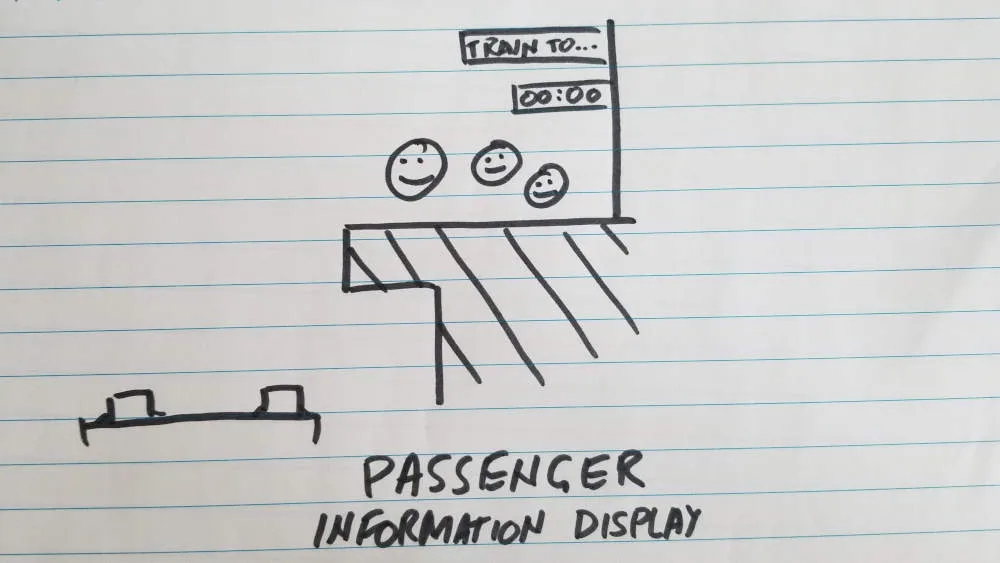 Passenger information displays work thanks to communications equipment
Passenger information displays work thanks to communications equipment
For example:
- Desktop computers inside train stations are linked to the control centre using communications equipment.
- Passenger information displays are told information about the next train, using communications equipment.
- On some train lines I’ve worked on, maintenance workers on the track can complete their paperwork using handheld devices, connected using communications equipment.
3. Fare collection
The machines that sell tickets are an important part of a modern train line. Fare collection, usually automated, is the system by which money is exchanged for tickets and those tickets are validated to allow passengers on the train.
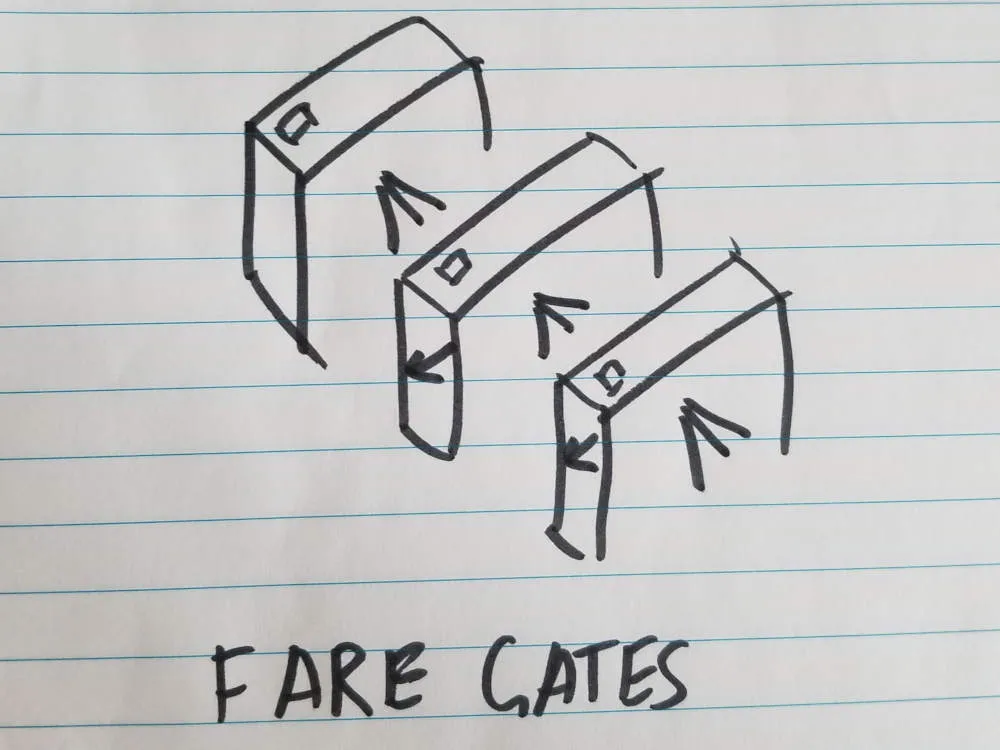 Fare gates help train companies collect fares automatically
Fare gates help train companies collect fares automatically
Automating fare collection has introduced machines and mechanical systems that need to be designed and maintained to allow the rail network to track the number of passengers using it, and the amount of money those passengers are spending.
I have never seen a train line that generates a profit from fare collection. Any profitable train line I’ve worked with has usually made its profit by leasing surrounding real estate such as shops.
4. Platform edge doors
Platform edge doors are installed on the edge of a platform and open up when a train is stopped at the station to allow people to board. Platform doors help reduce the likelihood of someone falling or jumping onto the tracks in front of a train. They also reduce air conditioning costs in underground train stations.
Platform edge doors can also be called platform screen doors.
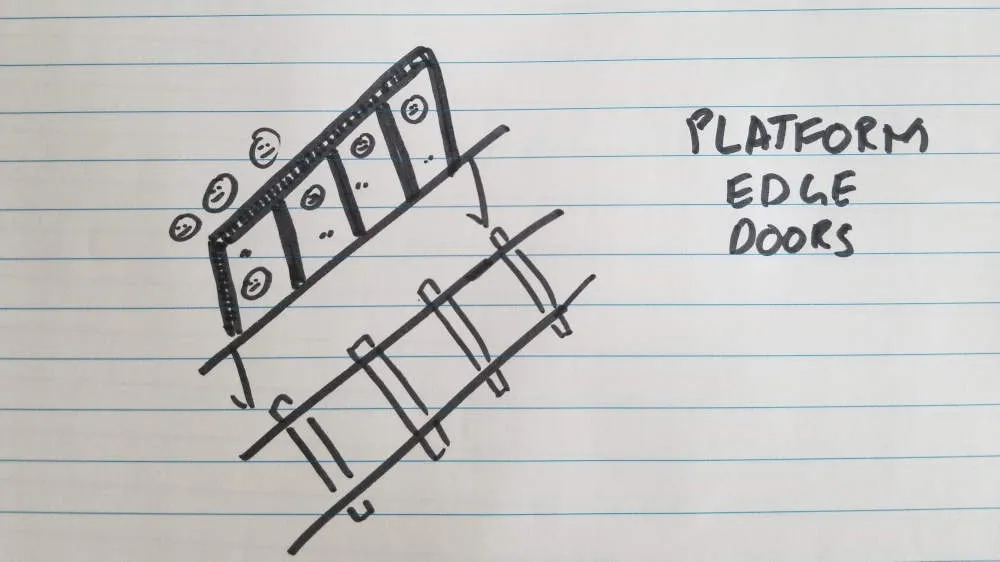 Platform edge doors separate passengers from the tracks at stations
Platform edge doors separate passengers from the tracks at stations
Despite popular belief, platform edge doors do not change the safety situation of automatic self-driving trains. If a person falls onto the tracks at a station, a train will not stop whether it’s driven by a human or a computer.
Platform edge doors can make the platform safer for everyone, regardless of whether the train is automatic or manual. They are expensive and there are often cheaper alternatives to reduce the chance of someone falling onto the track.
By dividing a rail network into its component systems, such as these listed above, the work of designing, building, operating, and maintaining the network can be similarly divided.
The rail systems listed here define what it is to be a train line, and the additional bits that make it work well for passengers and customers.
Here are some related articles if you’re interested in what else goes on in a rail network:
- What is rail signalling: https://econstructioncareers.com/news-insight/rail-signalling
- How automatic train control works: https://econstructioncareers.com/news-insight/how-automatic-train-control-works
- Explanation of terms such as consist and bogie: https://econstructioncareers.com/news-insight/eleven-rail-terms